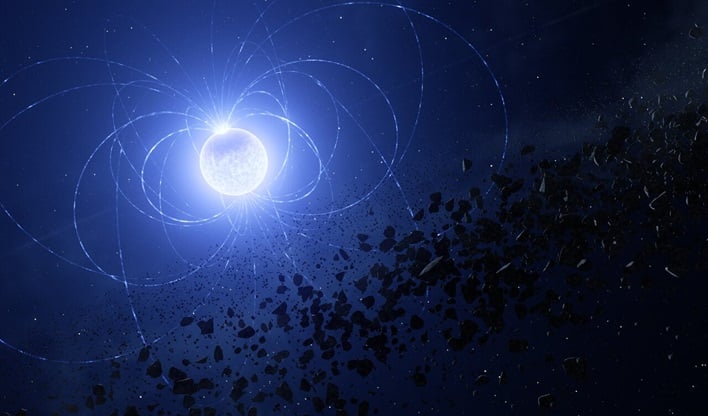Astronomers Spot A Metal Scar On A Zombie Cannibal Star That Eats Planets

White dwarf stars are known for cannibalizing pieces of their planetary system. When celestial objects like planets or asteroids approach a white dwarf they get disrupted. This process forms a debris disc around the dead star, with some of the material being ingested by the dwarf and leaving traces of certain chemical elements on its surface. In the case of WD 0816-310, researchers found that the signature of these chemical elements changed periodically as the star rotated, along with the magnetic field.
“Now we have discovered that the star’s magnetic field plays a key role in this process, resulting in a scar on the white dwarf’s surface,” remarked Stefano Bafnulo, an astronomer at Armagh Observatory and Planetarium in Northern Ireland, UK, and lead author of the recent study. The study also noted this showed that the magnetic fields siphoned these elements onto the star, accumulating them at the magnetic poles and forming the scar.
The researchers were surprised to find that material was not evenly mixed over the surface of the star, as predicted by theory. Co-author John Landstreet explained, “Instead, this scar is a concentrated patch of planetary material, held in place by the same magnetic field that has guided the infalling fragments." Nothing like this has been seen before.”
In order to obtain the data, researchers used a ‘Swiss-army knife’ instrument on the VLT called FORS2 (FOcal Reducer and low dispersion Spectrograph). FORS2 can take images of relatively extensive areas of the sky with acute sensitivity, and can also take spectra of objects in the sky simultaneously. Most importantly, however, is that this instrument can measure the polarization of light and can determine whether some astronomical objects have strong magnetic fields.
Astronomers are hopeful that with studies such as the one with white dwarf WD-0816-310, they can unveil the composition of exoplanets. It also shows how planetary systems can remain active, even after ‘death’.

